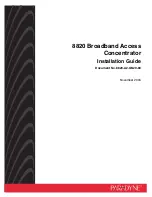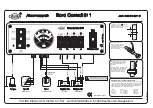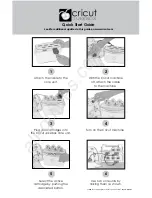
NI WSN-3230/3231 User Guide and Specifications
12
ni.com
Powering the NI WSN-3230/3231 Device
The NI WSN-3230/3231 device can be powered by either an external power supply or four AA alkaline
or lithium batteries. Refer to the
section for details about the input power and battery
requirements.
If both battery and external power are connected, the NI WSN-3230/3231 functions from the external
power input. The device is designed to provide battery backup in the event of loss of external power and
automatically switches to battery power when external power is lost.
Installing Batteries
To install batteries in the NI WSN-3230/3231 device, complete the following steps:
Caution
The device is static sensitive. Always properly ground yourself and the equipment when
handling or connecting to the device.
1.
Loosen the battery compartment retention screw and remove the compartment cover, as shown in
Figure 10.
Figure 10.
NI WSN-3230/3231 Battery Compartment
Caution
Using the incorrect battery type creates an explosion risk. Do
not
use rechargeable
Battery Replacement and Disposal
section for information about how to
dispose of used batteries.
Note
When using the NI WSN-3230/3231 device on battery power, you should configure the device
as an end node so that it sleeps most of the time. Running a device configured in router mode from
battery power greatly reduces the battery life. The device ships from the factory configured as an end
node. For more information about how to switch the node from an end node to router mode, refer to
Configuring WSN in MAX
, available from
Start»All Programs»National Instruments»NI-WSN
.
2.
Install four AA alkaline or lithium batteries in the device, making sure to install them with the correct
polarity. Figure 12 shows the battery polarity markings inside the device battery compartment.
3.
Reinstall the battery compartment cover and tighten the retention screw.
1
Battery Retention Screw
1













































